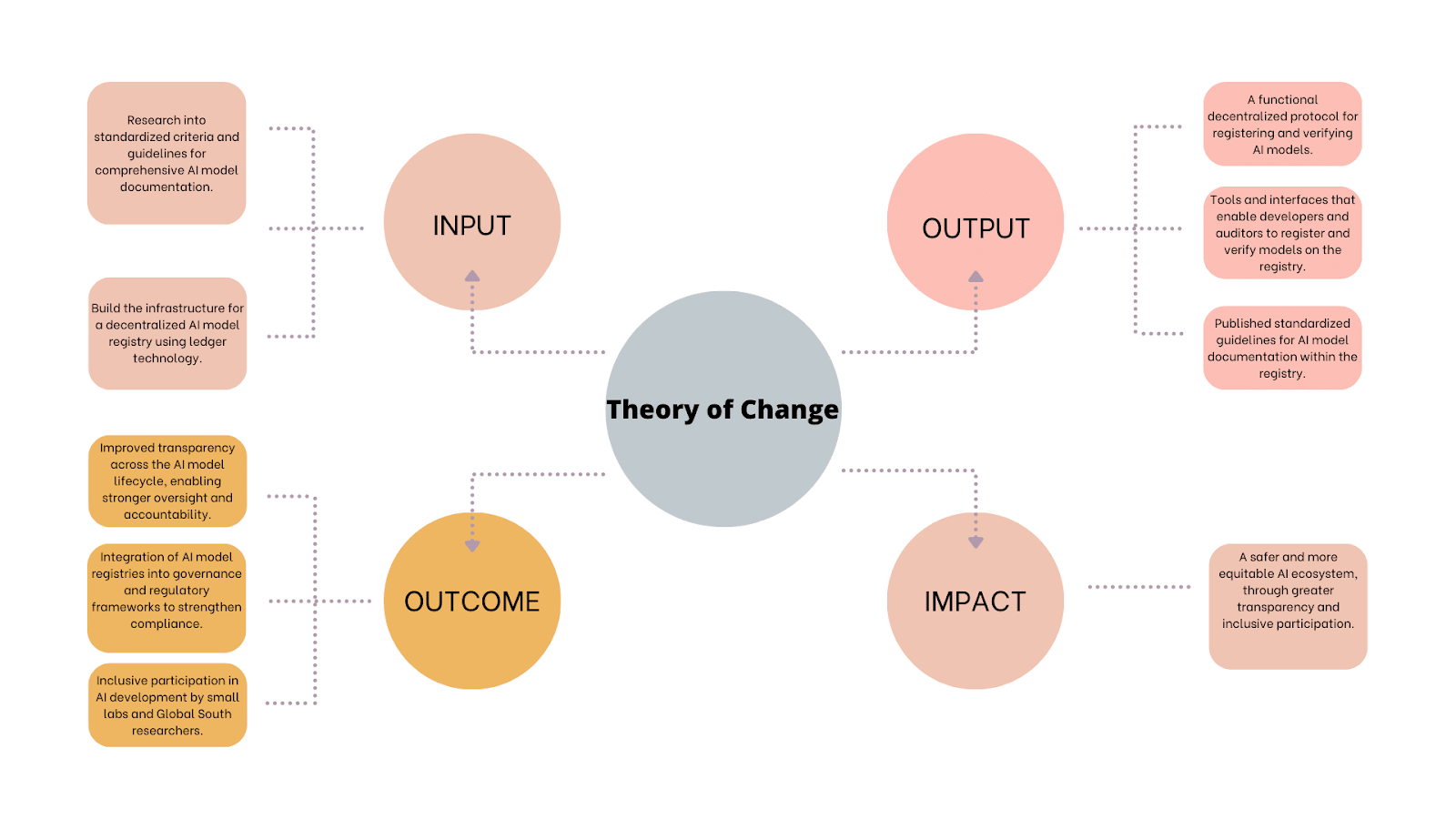Imagine you are a young entrepreneur in Nairobi trying to access credit to expand your business. The lender uses an AI model that predicts loan repayment risk. The model is listed in a centralized AI model registry run by regulators and large banks. You see the model is approved, but you cannot tell if it was designed with your context in mind. You do not know whether the model was trained on African financial data, like mobile money usage or informal savings groups, or if it relies mostly on Western banking data. You cannot see whether the model has been tested for inclusivity (to ensure that it does not automatically disadvantage people who lack formal credit histories). If your loan is denied, you cannot trace why the decision was made i.e whether bias against informal businesses played a role. Since approval decisions are centralized, there is a risk that the registry reflects the interests of big financial institutions, not the realities of everyday borrowers.
Just like food labels help you know what’s in your snacks, AI registries help people understand what’s inside AI models. Registries should keep track of what tools/models exist, who made them, what capabilities they have, safety audits and compliance data. The problem with centralized registries is that they rely on a single institution like a government or private company to maintain accurate records, creating a risk of manipulation, censorship, or politicization.
Now, picture the same above scenario with a decentralized AI registry. Every approval, update, and audit of the credit-scoring model is recorded on a public database. Borrowers, lenders, consumer advocates, and regulators can independently verify which datasets were used, whether mobile money and informal savings data were included, and whether any red flags around bias were raised. No single bank, lender, or regulator has the power to secretly alter the registry or fast-track a model that favors big players. The decentralized registry provides a transparent history of how the model was built, when it was updated, and who validated it, giving borrowers confidence that financial systems are accountable and inclusive.
A Pathway to Transparency and Inclusive Participation.
Building decentralized registries using blockchain technology ensures that records of AI models and tools remain transparent. Users can see all the details regarding a model, including updates made to the model over time. This increases trust and auditability as the models can be verified before deployment and the data stored remains immutable and verifiable. Researchers are able to collaborate more effectively as pre-trained models can be found, openly shared and transparently documented, allowing innovators to build on proven foundations and adapt models for local financial contexts.
Decentralized registries can significantly improve inclusivity for disadvantaged researchers by lowering barriers to participation in the global AI ecosystem. Today, visibility and credibility in AI are often concentrated in well-funded labs and institutions, leaving smaller labs, early-career researchers, and Global South researchers with limited recognition. A decentralized registry, built on open and transparent standards, allows any researcher to document, register, and verify their models in a trusted environment.
In a decentralized AI registry for fintech,for example, developers would be incentivized to prioritize safety because transparency becomes a competitive advantage. By documenting model risks, ethical considerations, and safety measures, developers build trust with lenders, regulators, and borrowers who can openly verify this information on the blockchain. Instead of hiding flaws, developers benefit from being upfront about limitations and mitigation strategies, since models with clear ethical documentation are more likely to be adopted by microfinance institutions.
Centralized registries make it hard to know if recorded data about models is trustworthy. It is difficult to verify if the model really works as described, that it was trained on the data it claims, or that its risk assessments are accurate. We can be able to verify these claims automatically using blockchain technology. One approach would be to create digital fingerprints of the model, its training data, or its code, deeming it immune to alteration without detection. Another approach could use secure computing methods like zero-knowledge proofs to prove the model was trained and tested as reported, without revealing sensitive details. These measures help ensure that the information in the registry is reliable and that models can be trusted.
Decentralized registries would require a standardized format for submitting information about AI models to avoid submissions omitting important details such as risk classification, deployment history, and ownership. Existing frameworks can be extended to accommodate this, and would borrow from model cards and other documentation requirements from governmental acts.
Theory of Change for Decentralized Registries
To increase adoption of decentralized AI registries, partnerships can be formed with open-source AI projects, research organizations, and regulators exploring public oversight tools. At the same time, providing user-friendly tools can make participation easier, such as web applications and browser extensions that allow users to inspect on-chain model information. Combining strategic partnerships with onboarding tools helps broaden the registry’s reach and encourages more developers, researchers, and institutions to contribute and verify AI models. As AI adoption grows globally across different sectors and socio economic groups, we need ways to trust what is behind these technologies. While central registries may be useful short term, for coordination, decentralized registries would provide long-term resilience, inclusivity and transparency.

